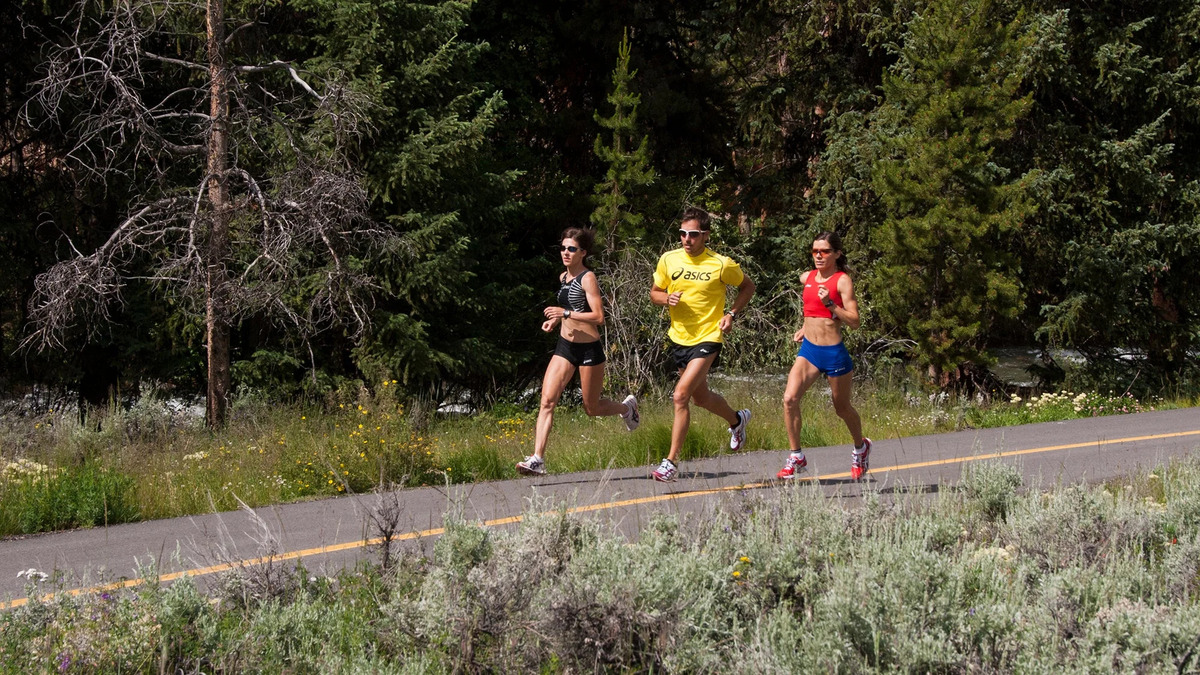Home>Misc>Featured>How Long After Hysterectomy Can I Exercise


Featured
How Long After Hysterectomy Can I Exercise
Published: October 2, 2023
Featured: Discover the recommended timeline for exercising after a hysterectomy and learn how to safely return to physical activity for optimal recovery.
Introduction
Going through a hysterectomy is a significant medical procedure that involves the removal of a woman’s uterus. Whether it is performed due to medical reasons, such as fibroids or cancer, or for personal reasons, such as preventing pregnancy or managing hormonal imbalances, a hysterectomy requires a proper recovery process. One common question that many women have after this procedure is, “How long after hysterectomy can I exercise?”
The recovery period after a hysterectomy can vary depending on various factors, including the type of hysterectomy performed, the individual’s overall health, and the specific instructions provided by the surgeon. While it is crucial to allow the body sufficient time to heal before engaging in physical activities, exercise plays an essential role in maintaining overall health and well-being.
In this article, we will explore the factors that can affect the time it takes to resume exercise after a hysterectomy, the types of exercises that are commonly recommended, and the precautions to consider while engaging in physical activities post-surgery. Additionally, we will highlight the benefits of exercise after a hysterectomy, both physically and emotionally.
It is important to note that every woman’s recovery journey is unique, and the information provided in this article should serve as a general guide. It is always best to consult with your healthcare provider or surgeon before starting any exercise routine after a hysterectomy to ensure it aligns with your specific postoperative needs.
Recovery period after hysterectomy
After undergoing a hysterectomy, it is crucial to allow your body ample time to heal. The recovery period can vary depending on the type of hysterectomy performed and individual factors such as age, overall health, and the reason for the surgery. On average, most women can expect a recovery period of about 6 to 8 weeks.
During the initial weeks following the surgery, it is common to experience pain, fatigue, and discomfort. Your healthcare provider may prescribe pain medications and advise you to take sufficient rest. It is crucial to follow their instructions and refrain from engaging in strenuous physical activities during this time.
As the weeks progress, you will gradually start to regain your strength and energy. It is important to listen to your body and not push yourself too hard. Give yourself permission to rest when needed and gradually ease into light activities.
It is important to note that the recovery period can vary from person to person. Some women may recover faster and feel ready to resume regular activities, including exercise, sooner than others. However, it is essential to consult with your healthcare provider before starting any exercise routine to ensure that you are fully healed and ready to engage in physical activities.
Factors affecting the time to resume exercise
Several factors can influence the timing of when it is safe to resume exercise after a hysterectomy. It is important to consider these factors to ensure a smooth and healthy recovery process. Here are some key factors that can affect the time to resume exercise:
- Type of hysterectomy: The type of hysterectomy performed can greatly impact the recovery process. A total hysterectomy, which involves the removal of the uterus and cervix, may require a longer recovery period compared to a partial hysterectomy, where only the uterus is removed. The surgical approach used (e.g., laparoscopic or abdominal) can also affect recovery time.
- Extent of tissue removal: In some cases, additional tissue or organs may be removed during the hysterectomy, such as the ovaries, fallopian tubes, or nearby lymph nodes. The removal of these structures can impact hormone levels and overall healing, potentially requiring a longer recovery period.
- Overall health and fitness: Factors such as age, pre-existing medical conditions, and overall fitness level can influence recovery time. Generally, a person in good health prior to the surgery may experience a faster recovery compared to someone with underlying health issues.
- Complications during surgery: If any complications arise during the surgery, it may prolong the recovery period. Discuss any complications that occurred during your surgery with your healthcare provider to determine the appropriate time to resume exercise.
- Postoperative progress: Everyone heals at their own pace. Factors such as wound healing, pain management, and restoration of energy levels can influence the time it takes to feel ready for exercise. It is essential to closely follow your healthcare provider’s postoperative instructions and attend any necessary follow-up appointments to monitor your progress.
Keep in mind that these factors are general guidelines, and individual experiences may vary. It is crucial to consult with your healthcare provider for personalized advice on when it is safe for you to resume exercise based on your specific circumstances.
Types of exercise post-hysterectomy
As you progress in your recovery from a hysterectomy, incorporating exercise into your routine can have numerous benefits for your physical and emotional well-being. However, it is essential to choose exercises that are safe for your body as it continues to heal. Here are some recommended types of exercise post-hysterectomy:
- Walking: Walking is a low-impact exercise that can be started early in the recovery process, as long as you feel comfortable. Begin with short walks and gradually increase the duration and intensity as your body allows. Walking not only helps improve cardiovascular health but also aids in maintaining muscle tone and supports healthy digestion.
- Low-impact aerobic exercises: Once your healthcare provider gives you the green light, you can incorporate low-impact aerobic exercises, such as stationary biking, swimming, or using an elliptical machine. These exercises provide cardiovascular benefits without putting excessive strain on your joints.
- Strength training: Building and maintaining muscle strength is essential for overall health and can help prevent loss of muscle mass that may occur during recovery. Start with light weights or resistance bands and focus on exercises that target the major muscle groups. Remember to use proper form and gradually increase the intensity as your body gets stronger.
- Pelvic floor exercises: Strengthening the pelvic floor muscles is particularly important after a hysterectomy. These exercises, also known as Kegel exercises, can be done by contracting (squeezing) and relaxing the muscles of the pelvic floor. Consult with a pelvic floor physical therapist for guidance on proper technique.
- Yoga and stretching: Gentle stretching exercises and yoga can help improve flexibility, reduce muscle tension, and promote relaxation. Choose beginner-level yoga poses and stretches, and avoid any movements that strain or put pressure on the abdomen.
- Mind-body exercises: Practices such as meditation and deep breathing exercises can help reduce stress, improve sleep, and support emotional well-being during your recovery. Consider incorporating these exercises into your daily routine to promote overall healing.
Remember, start slowly and listen to your body. It is normal to experience some discomfort or fatigue as you gradually reintroduce exercise into your routine. If you experience any persistent pain, discomfort, or unusual symptoms, consult with your healthcare provider promptly.
Recommendations for exercising after hysterectomy
When it comes to exercising after a hysterectomy, it is essential to prioritize safety and listen to your body’s signals. Here are some recommendations to keep in mind as you incorporate exercise into your post-hysterectomy routine:
- Consult with your healthcare provider: Before initiating any exercise regimen, consult with your healthcare provider for personalized advice and guidelines based on your specific situation.
- Start slowly: Begin with gentle exercises and gradually increase the duration and intensity. It is natural to feel some fatigue or discomfort initially, but avoid pushing yourself too hard or experiencing any pain.
- Listen to your body: Pay attention to how your body feels during and after exercise. If you experience any pain, excessive fatigue, or unusual symptoms, modify or stop the activity and consult with your healthcare provider if necessary.
- Avoid heavy lifting and high-impact exercises: Refrain from heavy lifting and high-impact activities that can put strain on the pelvic area. Give your body time to heal and gradually reintroduce these activities under the guidance of your healthcare provider.
- Use proper form: When performing strength training exercises, ensure that you use proper form to prevent injury. Consider working with a certified personal trainer or physical therapist who can guide you in proper technique.
- Stay hydrated: Drink plenty of water before, during, and after exercise to stay adequately hydrated. Proper hydration is crucial for overall health and helps prevent muscle cramps and fatigue.
- Wear comfortable clothing and supportive footwear: Choose breathable, comfortable clothing that allows for freedom of movement during exercise. Additionally, wear supportive footwear to protect your feet and provide stability.
- Take rest days: Allow your body time to rest and recover between exercise sessions. Giving your muscles time to repair and rebuild is crucial for overall strength and well-being.
- Stay consistent: Aim for regular exercise sessions rather than sporadic workouts. Consistency will help you gradually regain strength, improve endurance, and experience the long-term benefits of exercise.
Remember, every person’s recovery journey is unique, and it is essential to respect your body’s needs and limitations. Be patient and trust the healing process. With time, proper care, and guidance from your healthcare provider, you can safely and effectively reintroduce exercise into your life after a hysterectomy.
Precautions and limitations for exercise after hysterectomy
While exercise can be beneficial after a hysterectomy, there are certain precautions and limitations you should be aware of to ensure a safe and smooth recovery. Here are some considerations to keep in mind when exercising post-hysterectomy:
- Avoid high-impact activities: High-impact exercises such as running, jumping, or intense aerobic workouts can place excessive strain on the pelvic area. These activities should be avoided during the initial stages of recovery.
- Protect the incision site: If you have an abdominal incision, it is essential to protect it from excessive stretching, pulling, or pressure. Avoid exercises that place direct pressure on the incision site, such as abdominal crunches or intense core exercises.
- Listen to your body: Pay attention to any discomfort, pain, or fatigue during exercise. If you experience any unusual symptoms, stop the activity and seek guidance from your healthcare provider.
- Avoid heavy lifting: Refrain from lifting heavy objects, including weights, during the initial weeks of recovery. Heavy lifting can strain the pelvic muscles and interfere with the healing process.
- Avoid straining during bowel movements: Straining during bowel movements can put unnecessary pressure on the pelvic area. To avoid strain, ensure you eat a fiber-rich diet, stay properly hydrated, and, if needed, take prescribed stool softeners.
- Manage hormone fluctuations: Hormonal changes following a hysterectomy can impact your energy levels and overall well-being. Be mindful of how hormonal fluctuations may affect your exercise performance and adapt your routine accordingly.
- Follow your healthcare provider’s instructions: Your healthcare provider knows your specific medical history and surgical details. Follow their instructions regarding when and how to resume exercise, as well as any specific limitations or precautions based on your individual circumstances.
- Gradually increase intensity: As your body heals and gains strength, gradually increase the intensity and duration of your workouts. Avoid pushing yourself too hard too soon, as this can impede the healing process and lead to injury.
- Don’t be afraid to ask for help: If you are unsure about the safety of a specific exercise or need assistance with modifying movements, don’t be afraid to ask for help. Consider working with a certified fitness professional or physical therapist familiar with post-hysterectomy exercise guidelines.
Remember, every woman’s recovery process is unique, so it’s essential to consult with your healthcare provider for personalized advice and guidance. By taking proper precautions and listening to your body, you can safely incorporate exercise into your post-hysterectomy routine and support your overall well-being.
Benefits of exercise after hysterectomy
Engaging in regular exercise after a hysterectomy can offer various benefits for both your physical and emotional well-being. While it is important to listen to your body and follow your healthcare provider’s instructions, incorporating exercise into your routine can have the following positive effects:
- Promotes overall healing: Regular physical activity can enhance blood circulation and promote healing by delivering oxygen and essential nutrients to the surgical site. It can also help reduce inflammation and decrease the risk of postoperative complications.
- Restores strength and endurance: The recovery period after a hysterectomy can result in muscle weakness and decreased endurance. By incorporating appropriate strength training and cardiovascular exercises into your routine, you can gradually regain strength, improve muscle tone, and enhance overall stamina.
- Supports weight management: Exercise plays a crucial role in maintaining a healthy weight or managing weight gain that may occur after a hysterectomy. It can boost your metabolism, burn calories, and help you maintain a healthy body composition.
- Improves mood and reduces stress: Physical activity releases endorphins, which are natural mood-enhancing chemicals in the brain. Exercise can help alleviate stress, improve sleep patterns, and reduce symptoms of anxiety or depression that may arise during recovery.
- Enhances bone health: Weight-bearing exercises, such as walking or strength training, can help improve bone density and reduce the risk of osteoporosis, which may be a concern after a hysterectomy due to hormonal changes.
- Improves heart health: Engaging in regular cardiovascular exercise can improve heart health, lower blood pressure, and reduce the risk of cardiovascular diseases. This is particularly important for women, as they may have an increased risk of cardiovascular issues after menopause.
- Boosts energy levels: While it is common to experience fatigue during the initial recovery period, regular exercise can gradually increase your energy levels and combat feelings of tiredness. It can also improve sleep quality, leading to more restorative rest.
- Promotes body confidence and self-esteem: Engaging in physical activity and witnessing improvements in strength, endurance, and overall fitness can boost body confidence and self-esteem. It can help you feel more in control of your body and its capabilities.
It is essential to note that the benefits of exercise after a hysterectomy can vary between individuals. Start slowly, listen to your body, and consult with your healthcare provider for guidance on the most suitable exercise routine for your specific needs and recovery progress.
Conclusion
After undergoing a hysterectomy, incorporating exercise into your recovery process can have numerous benefits for your physical and emotional well-being. However, it is crucial to approach exercise with caution, listen to your body, and follow the guidance of your healthcare provider. The recovery period can vary for each individual, so it is important to be patient with yourself and allow ample time for healing.
By gradually reintroducing exercise into your routine, starting with low-impact activities like walking and gradually increasing in intensity, you can restore strength, improve cardiovascular health, and enhance overall stamina. Strength training exercises can help maintain muscle tone and prevent loss of muscle mass, while pelvic floor exercises support the health of the pelvic muscles. Mind-body exercises like yoga and meditation can also promote relaxation and reduce stress during your recovery.
Remember to abide by any precautions or limitations provided by your healthcare provider. Be mindful of your body’s signals, avoid high-impact exercises or heavy lifting during the initial stages of recovery, and prioritize proper form to prevent injury. Stay hydrated, wear comfortable clothing, and take rest days as needed.
The benefits of exercise after a hysterectomy include promoting overall healing, restoring strength and endurance, supporting weight management, improving mood, enhancing bone health, and boosting heart health. Exercise can also increase energy levels, promote body confidence, and improve self-esteem.
It is important to consult with your healthcare provider for personalized advice and to ensure that your exercise routine aligns with your specific needs and recovery progress. With proper care, patience, and guidance, you can safely and effectively incorporate exercise into your post-hysterectomy journey, supporting your overall health and well-being.









